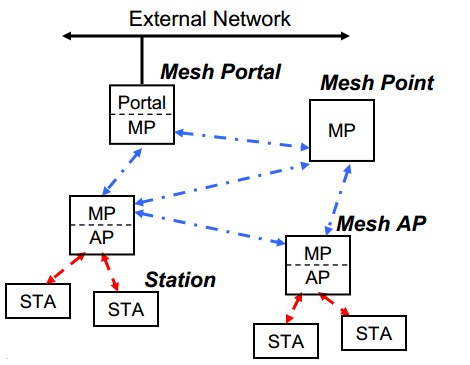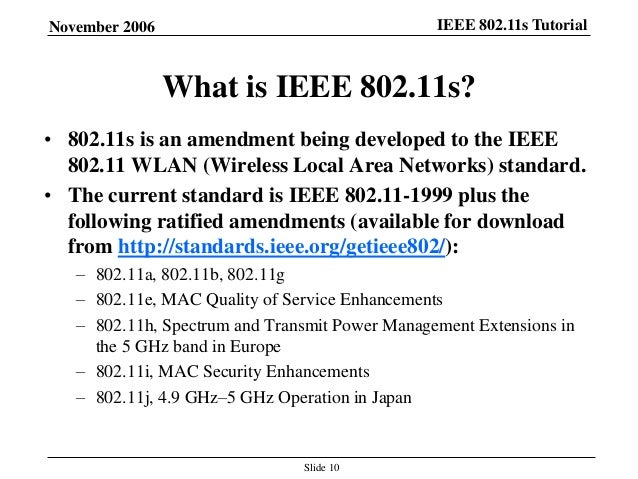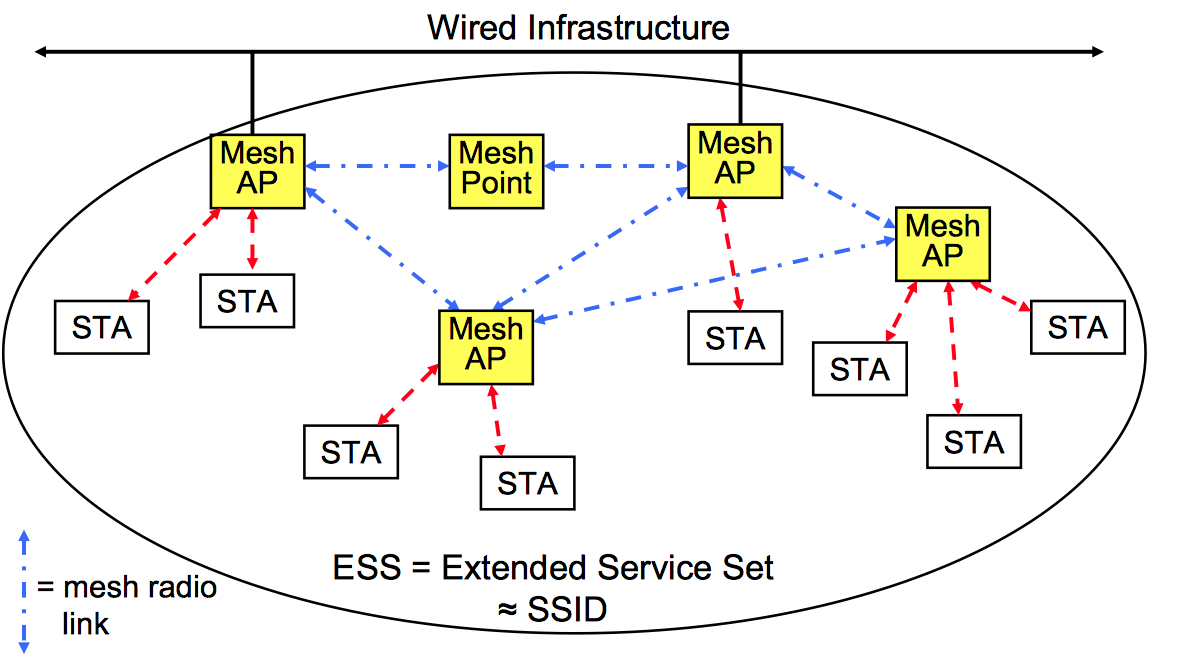IEEE 802.11s
IEEE 802.11s is a standardized specification part of the IEEE 802.11 industry standards for wireless network communications. The aim of 802.11s is a manufacturer-independent standard for setting up wireless mesh networks. In contrast to the present mesh networks based on existing 802.11a/b/g-Standard-Hardware and higher network levels, working mesh routing software, the mesh routing takes place at 802.11s in the MAC layer instead (so that from terms of the OSI reference model, a " relaying MAC " ) and is therefore more efficient, particularly in terms of hardware requirements and power consumption.
History
The IEEE working group was formed in 2003 to define the 802.11s standard for wireless MESH- networks. This resulted in up to March 2006, two drafts WI -MESH and SEEMesh, which should then be combined to form a compromise.
In early 2011, there were 72 open comments. The adoption of the 802.11s standard has already been postponed several times, most recently in January of 2011 to September of the same year.
While the standard was not adopted, the company PacketHop implemented in May 2008, the first draft of 802.11s as firmware module. This supports the Wi-Fi chipset from Atheros.
Overview of the standardization project
Networking / Sensing
These include the formation of the network fall (how new nodes to bind to the network etc ), the exploration of neighborhood relations of the nodes as well as multi-channel sensing.
Routing
The routing should take place at 802.11s in the MAC layer, as ready right here the required information. However, it should be transparent to the layer above. The draft 1:07 of mid-2007, there are only a mandatory routing protocol, namely the Hybrid Wireless Mesh Protocol ( HWMP ), which must be implemented if one wants to meet the standard. The hitherto optional RA- OLSR is no longer part of the standard.
HWMP is a combination of two routing approaches.
In order to handle the mobile part of a mesh network, the reactive AODV is added to a metric. For the fixed part of the network as a proactive, tree - based method is used. Unlike OLSR not know all the network nodes change their neighbor relationship and the complete topology. In the mobile part of the routes are established only when required, in the fixed part of the network, all routes to a certain root node are known, but not the normal routes between nodes.
MAC
Beaconing and synchronization are implemented on this layer, further method for channel access control ( here MDA) as well as a local congestion control and power management. There is an extension of the 802.11e QoS standard.
Security
Security in 802.11s builds on the previous safety standard 802.11i essentially.
Others
The compatibility to existing 802.11a/b/g-Geräten should be ensured.









